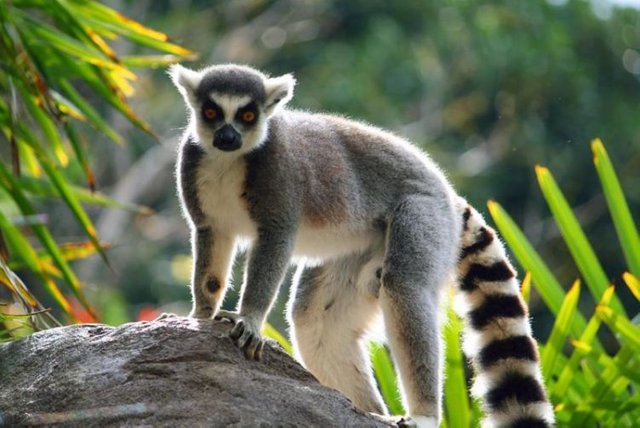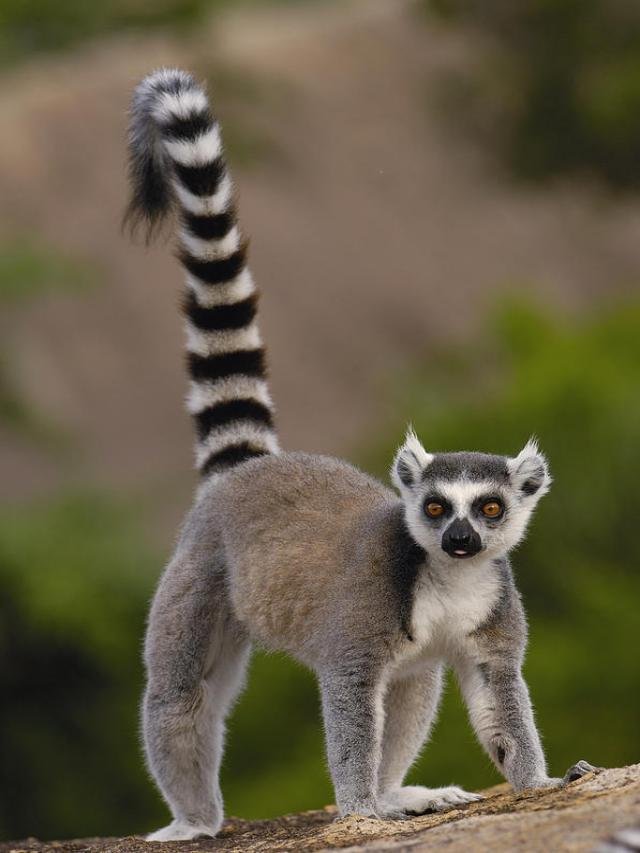Hello friends, this is my first publication about the science of the study of animals. In this publication, Madagascar is the main title with a planet, where species of animals predominate, which are very particular, in this case my first animal chosen for this posr is the lemur a very well known species in the area, you can take as a reference the lemur that appears in the madagascar movie, .. I hope this post is of your interest ..

What is the ring-tailed lemur ?
The lemur, also called ring-tailed maki, is a species of strepsirrhine primate of the family Lemuridae. The ring-tailed lemur is the only species within the monotypic genus Lemur and, like other lemurs, is found only in Madagascar. It is locally known as hira or maky, and it lives in the riverside forests and thorn scrub of the southern regions of the island. It is an omnivorous animal and the most terrestrial of the lemurs; of diurnal behavior, it remains active exclusively during the hours with daylight.

Anatomy and physiology
It is a relatively large lemur; its average weight is 2.2 kg, and its body length from the head varies between 39 and 46 cm, with a tail between 56 and 63 cm, which makes a total length between 95 and 110 cm.3 The length of its hind legs is between 102 and 113 mm, that of its ears is 40-48 mm and the length of its skull is between 78 and 88 mm.
Its fur is so dense that it can obstruct electric shavers, the ventral area and throat are white or cream and the dorsal (back) varies from gray to pinkish brown, sometimes with a brown pigment spot around the area of the tail, where the fur varies from pale gray to grayish brown. The dorsal coloration is slightly darker around the neck and crown. The hair on the throat, cheeks and ears is white or grayish and less dense, which allows you to appreciate your dark skin.

Ecology
The ring-tailed lemur is diurnal and semi-terrestrial. He spends 33% of his time on land, which makes him the most terrestrial of all lemurs. Even so, it is considerably arboreal, and spends 23% of its time in the intermediate canopy zone, 25% in the upper level canopy, 6% in the emergent layer and 13% in small shrubs. Group travel is 70% terrestrial.

Behavior
Diet
It feeds on no less than three dozen different plant species, and its diet includes flowers, herbs, bark and sap. It has been observed eating decaying wood, earth, cobwebs, insect larvae, arthropods (spiders, caterpillars, cicadas and grasshoppers) and small vertebrates (birds and chameleons) During the dry season it becomes more opportunistic.

Despite being a four-legged animal these lemurs can get up and swing on their hind legs, usually for aggressive demonstrations. When threatened, they can leap into the air and swoop forward with their short upper nails and sharp canines in a behavior called "jump fighting." This behavior is very rare outside of the breeding season, when tensions are common and the competition to get partners is intense.
The ring-tailed lemur is a polygynandria species, although the dominant male usually reproduces with more females than other males in the group. Fighting is more common during the breeding season, a receptive female can initiate mating by offering her backside, lifting her tail and looking at the desired male over her shoulder. The males can inspect the genitals of the female to determine if they are receptive. The females usually mate within their group, but they can look for external males.